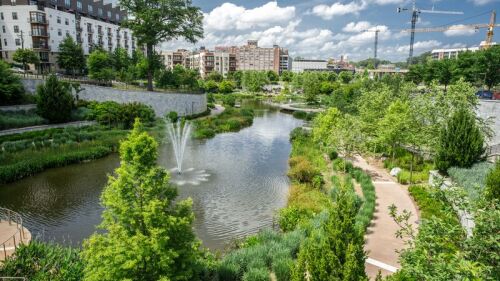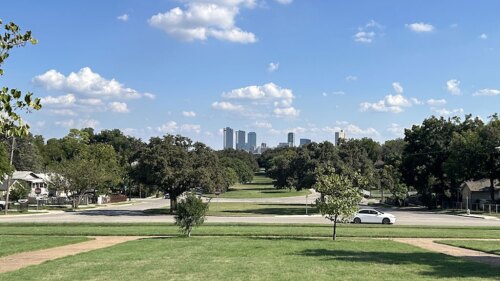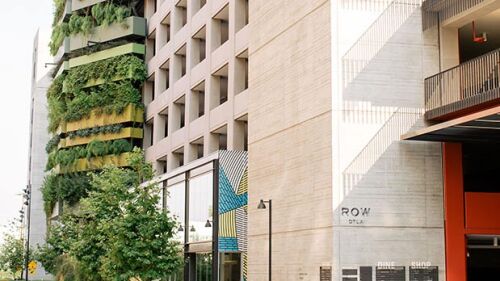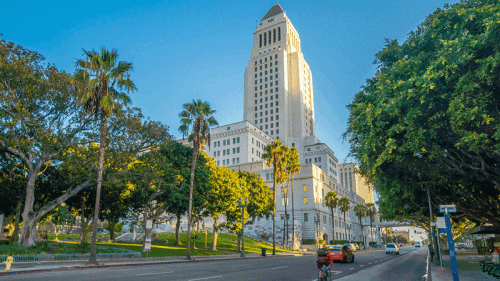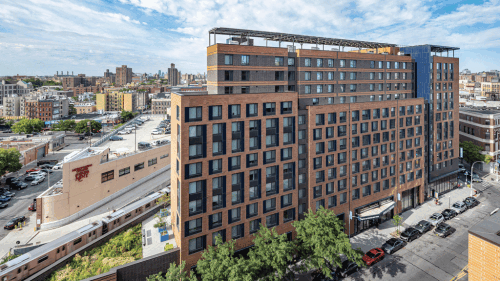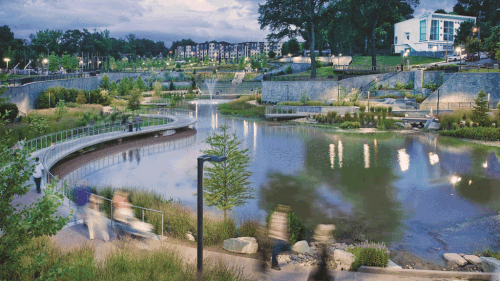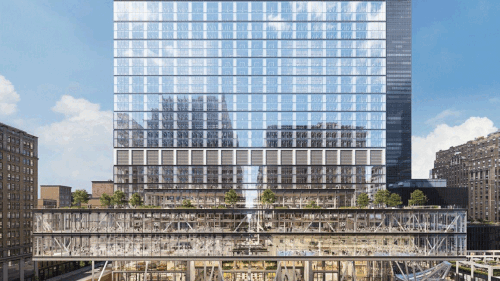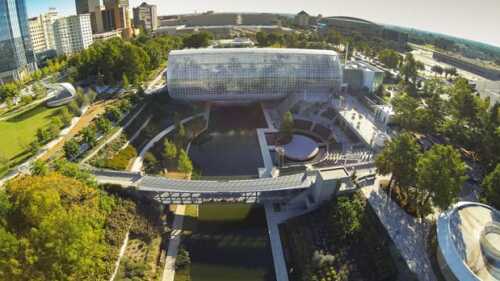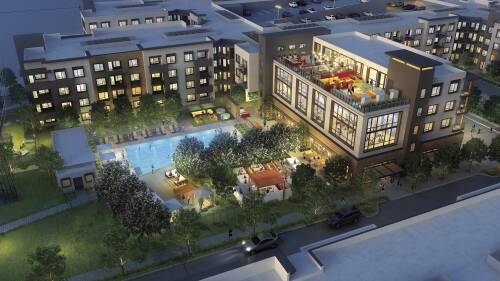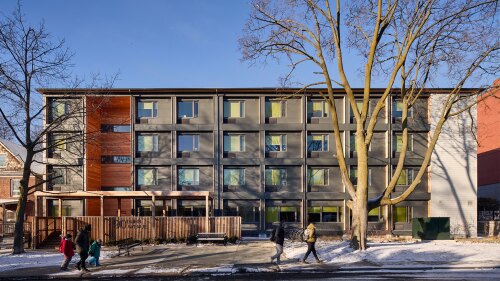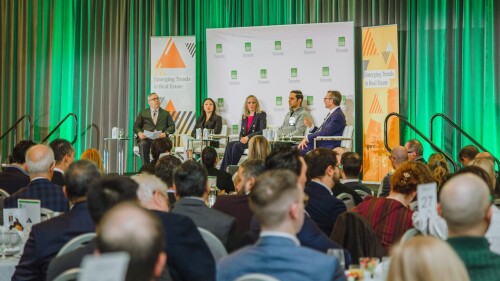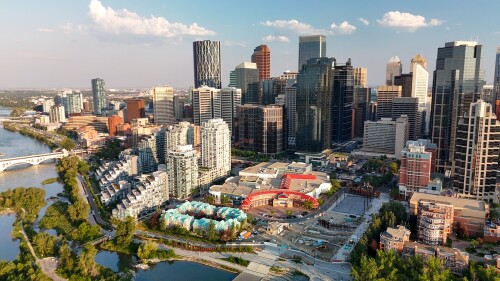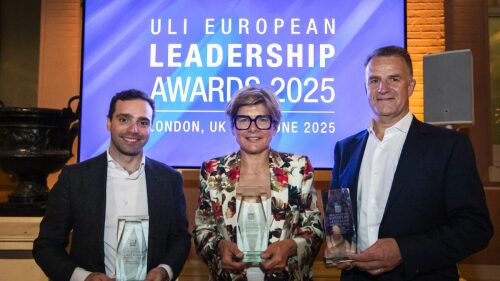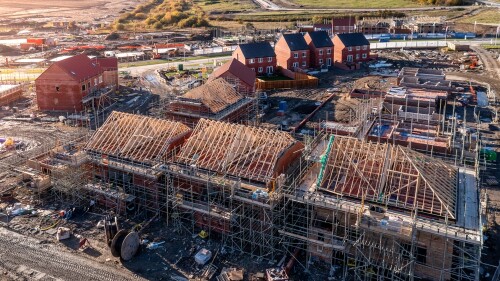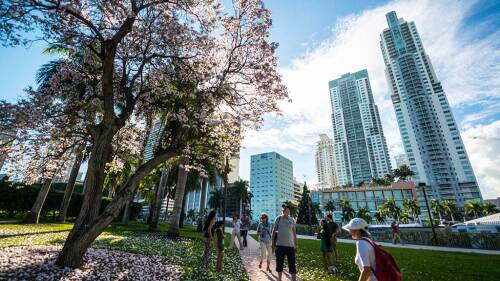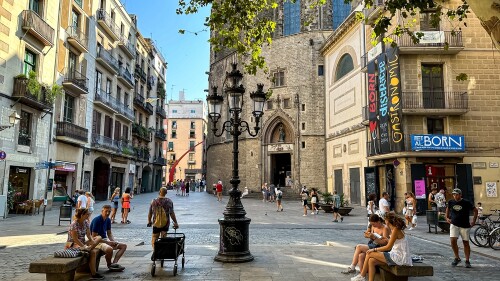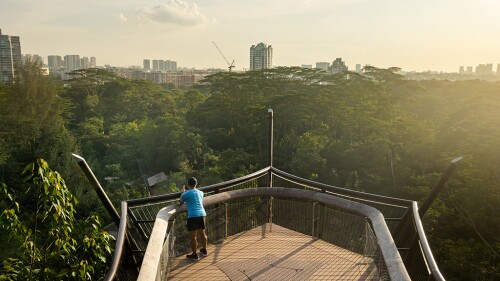Markets
Chicago
Six finalists have been selected for ULI’s Urban Open Space Award, the first year in which the competition was open to projects outside the United States and Canada. An international jury will select one winner, which will be announced at the Fall Meeting.
Five finalists have been announced for this year’s award, which recognizes outstanding examples of successful large- and small-scale public spaces.
Detroit complete with new development, a focus on density and walkability, and a growing, diverse population.
Dallas
Since the 1980s, the Dallas suburb of Plano has attracted some of the country’s biggest corporate headquarters and established itself as a hub for major employers. But how did Plano revamp to meet the goals of a changing economy and a changing community? The city made a pivot that has been echoed in growing cities around the country: a major shift toward investing in parks and activating green space.
A team of ULI experts visited Fort Worth in September 2024 to develop anti-displacement strategies for the city’s historic, majority Hispanic Northside neighborhood, which faces mounting pressure from two nearby megadevelopments, as well as broader metropolitan growth trends that drove up the area’s property values 60 percent from 2016 to 2021.
From resilient parks to bold adaptive reuse, this year’s winners redefine urban innovation and community impact across the Americas
Los Angeles
Americans are voraciously consuming digital content. The Consumer Technology Association estimates that consumers will spend $151 billion on technology services (the category for video, gaming, audio, and apps) in 2023, marking five consecutive years of growth. Entertainment companies are hurriedly working to meet this demand by ramping up television and film production.
To be successful and sustainable, fighting homelessness in Los Angeles requires crisis intervention on two fronts: First, we must build more permanent housing and much more of it needs to be affordable. Second, we must build more transitional shelter of every type—more quickly and much, much more affordably. But shelter is not enough.
Affordable housing in California has become increasingly difficult to develop in recent years in a state where there is a significant lack of it. Two developers speak to the barriers to development in Southern California.
New York City
Nationwide, the urgent need for more affordable housing has become crystal clear. The United States is grappling with a housing crisis, and building affordable housing has become increasingly difficult. Developers face high construction costs, ongoing supply chain issues, and skyrocketing prices for land, especially in some of the country’s largest cities. Even when a project comes together and gets financing, the process to obtain permitting, gain city approvals, and actually construct a project can take years.
City is actively working to make its neighborhoods safer and more resilient to extreme rain events
One of New York City’s busiest corridors is set for one of its biggest transformations in years. The area around Manhattan’s Penn Station has long been considered a sore spot for the city, as top-tier retail stores moved to more flourishing areas and local buildings became outdated. But now, with a billion-dollar plan by a New York state agency underway to revitalize public transit infrastructure in and around Penn Station, there is serious momentum for the Midtown neighborhood, which has stalled in growth as surrounding neighborhoods have evolved.
San Francisco
From craft breweries to artisanal food producers to bespoke jewelry crafters, modern small-scale manufacturing is breathing new life into long-abandoned warehouses and factories said panelists speaking at the ULI Fall Meeting in San Francisco.
Two urban parks—one in Oklahoma City, the other in Foshan, China—have been selected as winners of this year’s Urban Land Institute Urban Open Space Award.
Fragmented, density-skittish local governments have traditionally dictated the Bay Area’s housing supply, while private sector residential developers have struggled to build within the context of planning regulations often perceived as overly complex. Should housing be the next latest-and-greatest campus amenity?
Toronto
Across North America, cities are confronting a housing crisis that demands urgent, innovative responses. In Toronto, the launch of the Rapid Housing Initiative (RHI) in April 2020 marked a pivotal moment—an accelerated effort at the height of the pandemic to deliver safe, stable housing. Since then, unprecedented investments have been made in communities across Ontario to address housing insecurity, reshaping the province’s residential landscape.
Canada’s real estate market is in the midst of a pivotal shift as the Bank of Canada (BoC) rolls back what has been “higher for longer” interest rates. Yet despite welcome relief on financing costs, real estate leaders are still moving somewhat cautiously amid uncertainty and fluid market dynamics.
Obsolete buildings will constitute up to 50 percent of all new housing in cities
London
In the heart of London’s Covent Garden neighborhood, a complex of five Victorian-era structures—previously home to a seed merchant company, a brass and iron foundry, and a Nonconformist chapel, among other uses—have been restored and adapted into a single, cohesive office building with ground-floor retail and dining space. The three-year restoration preserved the property’s industrial heritage, yet it provides enough flexibility to meet the needs of today’s workforce.
The awards celebrate a senior leader, a young professional and a DEI champion
ULI has launched C Change for Housing, a major new pan-European program designed to mobilize the real estate industry around two of society’s most urgent and interconnected challenges: the climate crisis and housing affordability.
Paris
Although ready to commence a new real estate cycle, real estate leaders globally are braced for another challenging year of uncertainty, with lingering inflation, largely driven by factors including geopolitical instability, and persistently higher interest rates in some regions, potentially delaying a hoped-for recovery in capital markets and occupancy metrics. This is according to the Emerging Trends in Real Estate® Global Outlook 2025 from PwC and ULI, which provides an important gauge of global sentiment for investment and development prospects, amalgamating and updating three regional reports which canvassed thousands of real estate leaders across Europe, the United States and Asia Pacific.
The outlook for the European real estate market is cautiously optimistic despite growing geopolitical uncertainty and concerns about economic growth, with London, Madrid, and Paris emerging as the standout performers, according to a new report by PwC and the Institute.
According to the second annual C Change Survey, 93 percent of respondents report incorporating transition risks into their real estate investment decisions, indicating the industry’s growing awareness and commitment to integrate climate-related financial risks into decision-making processes.
Hong Kong
At the 2025 ULI Asia Pacific Summit—May 26–29, in Hong Kong—a panel of Asian economic and geopolitical experts addressed one of today’s most immediate global concerns: the implications of U.S.–China economic decoupling and the broader geopolitical shifts reshaping global trade and investment.
Fourteen developments from across Asia have been named winners of the 2025 ULI Asia Pacific Awards for Excellence, one of the real estate industry’s most prestigious honors. Announced at the 2025 ULI Asia Pacific Summit held in May in Hong Kong, this year’s award winners include projects in Australia, Bangladesh, China, India, Japan, the Philippines, and Singapore.
The creation of public space from unused, underused, or unequally shared linear spaces in urban areas has been happening for a long time. Major reference points in the architectural and planning worlds are Boston’s Emerald Necklace, designed by Frederick Law Olmsted (1878–1896); Freeway Park in Seattle (1972-1976); the Baltimore Inner Harbor (1963–1983); the Promenade Plantée in Paris (1987-1994); and the High Line in New York (2005–2019).
Singapore
A seminar organized by the ULI Singapore NEXT Committee presented attendees with the little-known concept of real estate “tokenization,” or fractional investing/trading, as a potential bridge between private investors and direct ownership. Although not new, tokenization in real estate is a niche market, particularly in Asia Pacific, with Singapore hosting a small number of the specialized digital platforms.
Once the site of an abandoned quarry, Singapore’s Rifle Range Nature Park now serves as a buffer zone protecting one of the island nation’s last primary rainforests, Bukit Timah Nature Reserve, from encroaching development and human activity. Located to the reserve’s south, Rifle Range is Singapore’s first net-positive energy nature park, harvesting more energy than its annual operational requirements.
One of Singapore’s most vibrant districts demonstrates how public/private partnerships and the community can shape the built environment.




